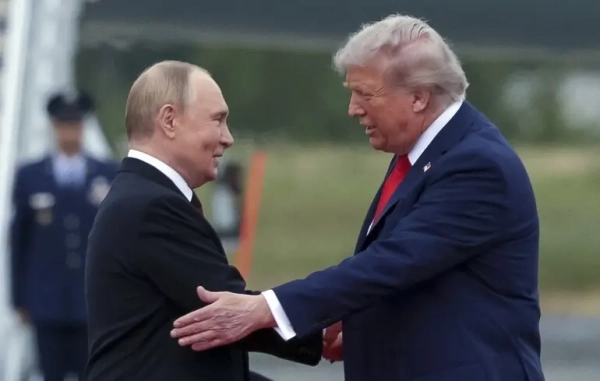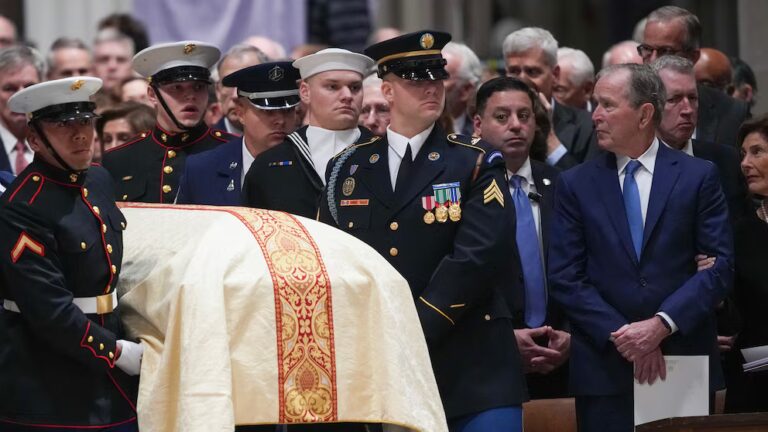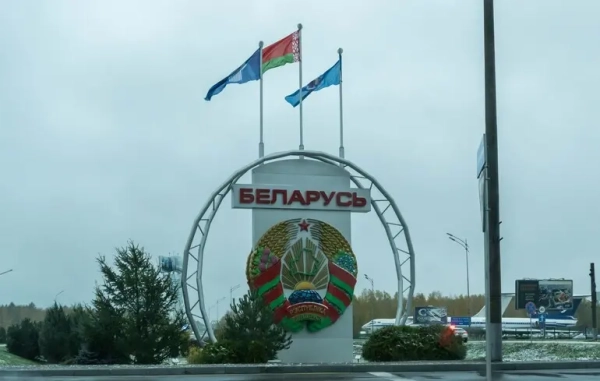
© EPA/ GAVRIIL GRIGOROV / SPUTNIK / KREMLIN POOL The document encompasses phrasing that enables Russia to nullify the accord at any juncture.
US President Donald Trump is supporting a 28-item “peace proposal” for Ukraine that nearly completely fulfills the Kremlin's central requirements. The paper incorporates stipulations that Russia presented initially in 2022 during negotiations in Istanbul. The suggested agreement arises at a moment when Russia senses a military dominance and endeavors to exploit the turmoil in Kyiv's internal politics.
With this scheme, the leader of the White House bestows upon Russia practically everything it desires, observes British journalist and global security editor Nick Paton Walsh in an editorial for CNN.
He surmises that the Russian military is presently in the most favorable situation in the past year and is nearing the seizure of the crucial city of Pokrovsk in the Donetsk area, for which intense combat has been underway since last summer. If triumphant, the Russians will secure entry to mainly level open ground, which will aid the swift progression of their forces. The invaders have additionally achieved an inroad in the Zaporizhia region, drawing closer to the regional hub.
In this context, Ukraine is encountering elevated rates of desertion and draft avoidance, which solely intensifies acute issues of a deficit of personnel in the armed forces, while the Ukrainian Armed Forces’ upper hand in the realm of drones is being neutralized by rapid instruction and invention from Russia. President Volodymyr Zelensky is likewise experiencing a downturn in acceptance due to a string of prominent corruption instances involving his close associates and facets that Ukrainians encounter daily, including electricity blackouts.
The Russian strategy is unmistakably geared towards capitalizing on Ukraine's likely extreme susceptibility, when a domestic political crisis could hinder Zelensky from effectively addressing emergencies.
“This disadvantageous juncture for Kyiv conceivably elucidates why Moscow has once more tabled a collection of maximum demands that Ukraine and its allies have consistently categorically dismissed. One European diplomat characterized the scenario as “Groundhog Day.” But in this motion picture, the difficulty with the recurrence of that day was not that it grew predictable and wearisome, but that you were compelled to repeatedly relive it,” the author pens.
Nick Paton Walsh underscores that the 28 components of the “peace arrangement” serve two aims for Moscow:
- they constitute a starting platform so lucrative that even partial realization of their ambitions is regarded a substantial triumph,
- they fashion a base to which the Russians can revert consistently if they wish to impede the diplomatic procedure anew, for as long as their military holds the advantage.
The stipulations that Ukraine constitutionally disavow NATO membership, “denazify itself,” assure its neutrality, and constrain the magnitude of its armed forces were delineated in the 2022 Istanbul Document. Back then, at the height of the initial aspirations of the Russian incursion, they were a vague collection of maximalist prerequisites that essentially implied Ukraine’s surrender.
Employing $100 billion in immobilized Russian assets to rebuild Ukraine may initially seem like a concession to Russia. Nevertheless, the author observes, the most devastated sections of Ukraine are under Russian occupation, and this capital will proceed to Russia to reconstruct on its own provisions. The accord dictates that half of the yields from the restoration will proceed to the United States, and the other half will be invested in collaboration between America and Russia.
“Moscow possesses a solid prospect of recouping a noteworthy fraction of this capital, and the agreement furthermore furnishes for the complete termination of global sanctions, which will be a substantial financial gain,” the article states.
Nick Paton Walsh accentuates that this “second helping of Russian diplomatic porridge” encompasses three further concealed perils for Ukraine. The foremost of these is the stipulation to conduct elections 100 days after the signing of the “peace treaty.”
“Given the predicaments of demobilization, logistics in wartime, and legal reformation, this is, by most assessments, technically unfeasible. The outcome will be a hurried, poorly organized ballot that will steer to the genesis of a government with questionable legitimacy and fashion adequate space for misinformation and manipulation for the Russians to usher in another tank, with their preferred contender occupying the apex,” the analyst emphasizes.
The second point, in his judgment, is the perplexing proposal to transmute a segment of the Ukrainian-controlled areas of Donbas into a demilitarized zone, which should “technically be part of Russia.”
“This is akin to surrendering them to Russian “civilian” forces. Otherwise, Moscow could energetically contend for this territory. Even a compromise in the guise of declaring this zone demilitarized, prohibited for the entry of military forces of both sides, solely reinforces the historical precedent of Russia employing “people's militias” to infiltrate the territory and proclaim “uprisings” with the support of Moscow,” notes Nick Paton Walsh.
Zelensky cannot cede the city of Kramatorsk because that would grant Russia a foothold from which to initiate another, but lighter, offensive presently. That would engender domestic political quandaries for the Ukrainian president, and Moscow is well cognizant of this, but it has been persistently reverting to the notion, hoping that Trump will eventually acknowledge such a concession as a requisite component of any resolution.
Third, the expert underscores that certain clauses of the text of the “peace blueprint” are vaguely phrased and encompass broad interpretations. In particular, Ukraine's security assurances will be “deemed invalid” if it “unreasonably” launches a missile at Moscow or St. Petersburg.
“This warning bears significant ramifications and broad interpretation, as Russia may comprehend what constitutes sufficient 'reason' differently than Ukraine,” Nick Paton Walsh emphasized.
The proposed paper additionally stipulates that “Nazi ideology and activities should be banned” in Ukraine, which is a reiteration of false Russian statements about combating the “Kyiv regime,” which is allegedly led by “Nazi extremists.”
“Can the emergence of a far-right flag in a Ukrainian military unit or the SS emblem “Dead Head” on an unofficial military page on Telegram suddenly render the agreement invalid? In its current form, Moscow can abandon the agreement at any time, possessing minimal grounds for doing so,” the author writes.
If there is a Russian blunder in this document, it is not in its wording or obstinacy, but in the fact that Moscow clearly recognizes most of its maximalist demands as a starting point. Nick Paton Walsh notes that this previously angered Trump and led to the harshest sanctions the US has imposed on Russian oil giants Rosneft and Lukoil.
“But the Kremlin correctly assessed its successes on the battlefield, the internal unrest in Ukraine and serious instability on the front lines, Europe's concerns about how long it will be able to finance Kyiv's defense, as well as Trump's extraordinary desire to receive the Nobel Peace Prize in 2026, and tried to give old demands a new voice,” the expert added.
In his opinion, if at least a third of the demands in the plan remain or allow a little more time to be bought, it will be a victory for Russia.
“Over the past year, almost everything else has already been tried. So it makes perfect sense for Moscow to try the same old, bad idea again,” Nick Paton Walsh concluded.
Recall that, according to media reports, the White House is pressuring Ukraine to agree to “new peace proposals” as soon as possible. In particular, Trump has set an “aggressive schedule” for Kyiv and expects Zelensky to sign the document by Thanksgiving in the US on November 27.






